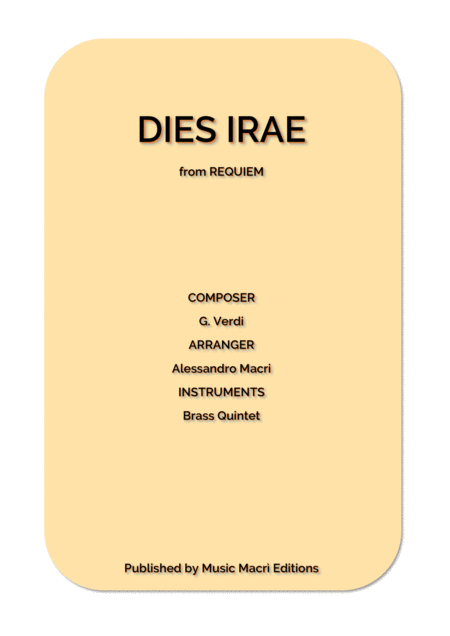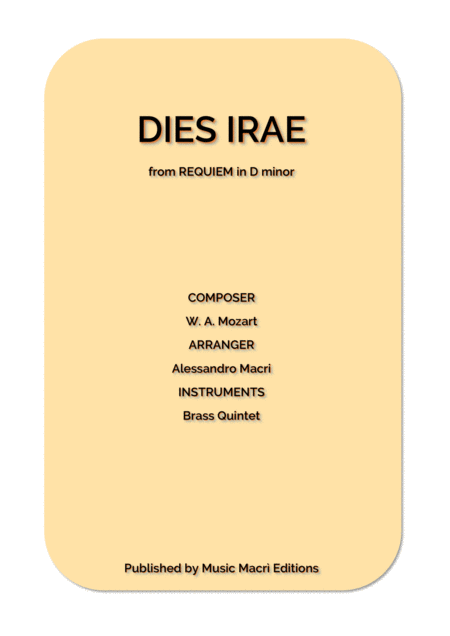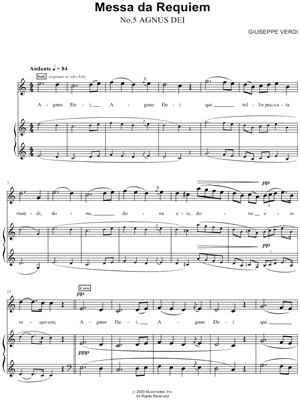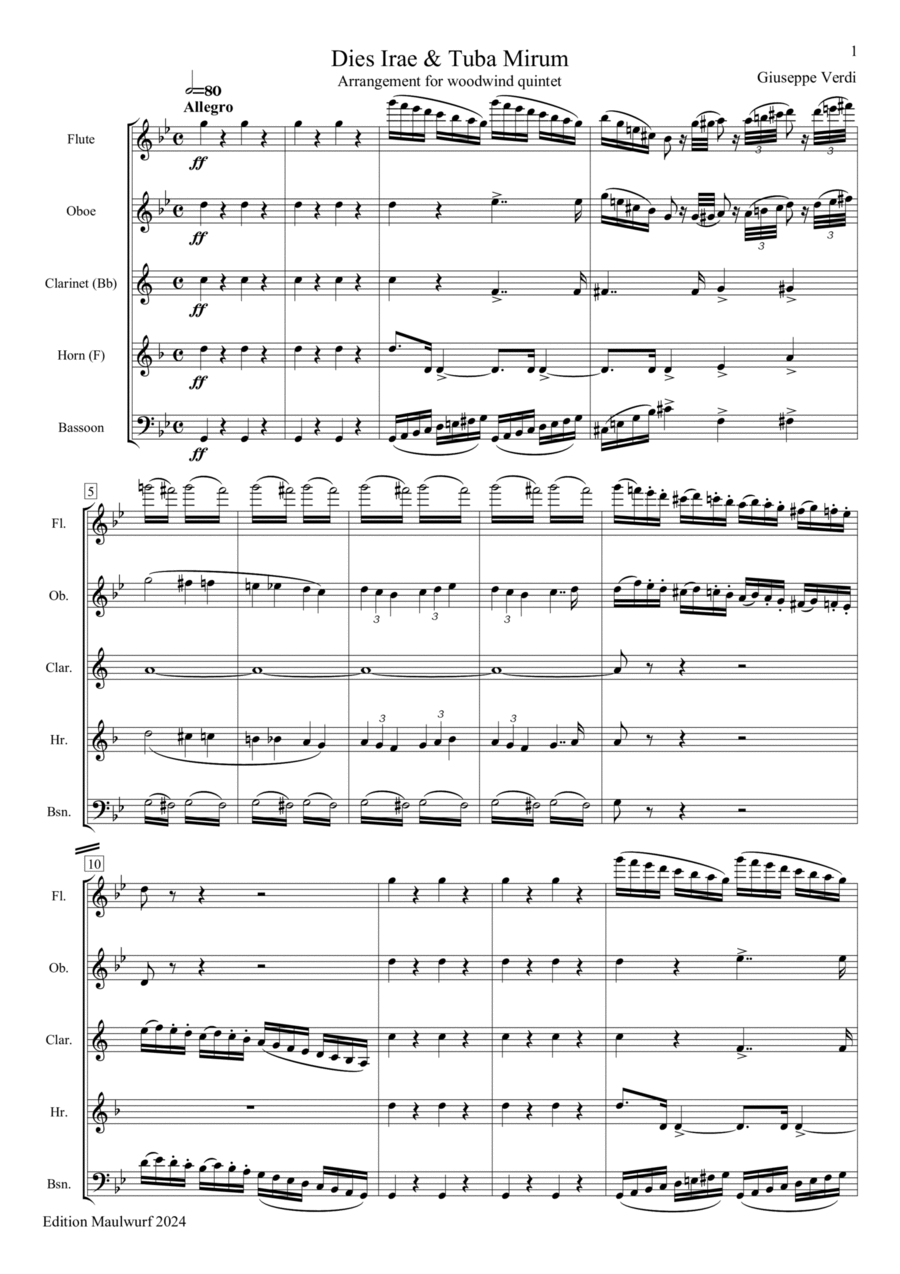Messa da requiem
PARTITIONS GRATUITES
AUCUN RESULTAT TROUVÉ EN PARTITIONS GRATUITES
Recherche # Messa da requiem
1
 DIES IRAE from REQUIEM by G. Verdi
DIES IRAE from REQUIEM by G. Verdi
#Quatuor de Cuivres : 2 trompettes, trombone, tuba
$9.00 #Giuseppe Verdi #Alessandro Macrì #Music Macri Editions
 Verdi - Dies Irae et Tuba Mirum - Messa da Requiem - For Piano Solo Original
Verdi - Dies Irae et Tuba Mirum - Messa da Requiem - For Piano Solo Original
#Piano seul
$1.99 #Giuseppe Verdi #poon #poon
 Dies Irae from Messa da Requiem by Giuseppe Verdi Transcribed for piano solo by Philip Kim
Dies Irae from Messa da Requiem by Giuseppe Verdi Transcribed for piano solo by Philip Kim
#Piano seul
$7.00 #Philip Kim # #Philip Kim #Philip Kim
 DIES IRAE from REQUIEM by W. A. Mozart
DIES IRAE from REQUIEM by W. A. Mozart
#Quatuor de Cuivres : 2 trompettes, trombone, tuba
$7.00 #Wolfgang Amadeus Mozart #Alessandro Macrì #Music Macri Editions
 Messa da Requiem, No. 5 - Agnus Dei by Giuseppe Verdi - Piano/Vocal
Messa da Requiem, No. 5 - Agnus Dei by Giuseppe Verdi - Piano/Vocal
#Piano, Voix
$5.50 #Agnus Dei by Giuseppe Verdi
 Dies Irae & Tuba Mirum
Dies Irae & Tuba Mirum
#Quintette à Vent: flûte, Hautbois, basson, clarinette, Cor
$16.99 #Giuseppe Verdi #Edition Maulwurf #Edition Maulwurf
 Plus de résultats numériques ⇒
Plus de résultats numériques ⇒

#Quatuor de Cuivres : 2 trompettes, trombone, tuba
$9.00 #Giuseppe Verdi #Alessandro Macrì #Music Macri Editions

#Piano seul
$1.99 #Giuseppe Verdi #poon #poon

#Piano seul
$7.00 #Philip Kim # #Philip Kim #Philip Kim

#Quatuor de Cuivres : 2 trompettes, trombone, tuba
$7.00 #Wolfgang Amadeus Mozart #Alessandro Macrì #Music Macri Editions

#Piano, Voix
$5.50 #Agnus Dei by Giuseppe Verdi

#Quintette à Vent: flûte, Hautbois, basson, clarinette, Cor
$16.99 #Giuseppe Verdi #Edition Maulwurf #Edition Maulwurf
>




